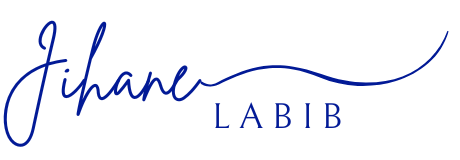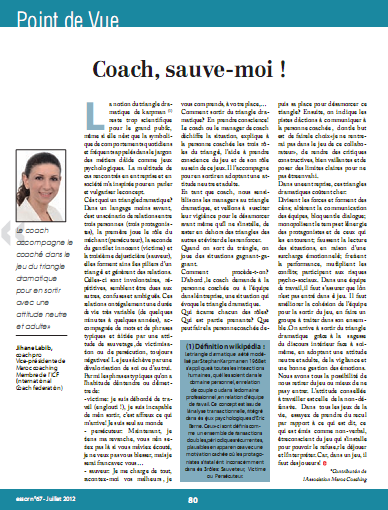EssorN°67-Juillet 2012
“Coach, Save Me!”: How to Break Free from theDrama Triangle at Work
By Jihane Labib
Originally published in Essor N°67 – July 2012
What Is the Drama Triangle?
The Drama Triangle, introduced by StephenKarpman, is a powerful model for understanding dysfunctional socialinteractions. Although it’s a widely used concept in coaching and psychology,it can feel overly “academic” for the general public—despite describing common,everyday behaviors we all witness or experience at work and in life.
Let’s break it down.
The triangle involves three psychologicalroles:
- The Persecutor (the “bad guy”)
- The Victim (the “poor me”)
- The Rescuer (the “hero” or “fixer”)
These roles interact in a toxic, repetitivepattern, often without conscious awareness. Here’s how it might sound in acorporate context:
- Victim: “I’m drowning in work—I just can’t keep up. No one helps me!”
- Persecutor: “This is your fault. If you’d listened to me, we wouldn’t be in this mess.”
- Rescuer: “Don’t worry, I’ll handle everything for you. Just tell me what’s wrong.”
This emotional game drains energy, breaks downteam trust, and reinforces toxic dynamics.
Step One: Awareness Is the Exit
The first step to breaking free is awareness.Whether you're a coach, manager, or team member, recognizing the pattern iscritical. Once identified, the coach can help the coachee explore their role inthe triangle and develop a more neutral, adult response.
Coaches also teach leaders to detect trianglesearly, avoid being pulled into them, and promote healthier communicationinstead of fueling drama.
Common Costs of the Drama Triangle in Business
Triangles are expensive—and not justemotionally.
They:
- Create divisions and cliques
- Disrupt communication and teamwork
- Consume time and emotional energy
- Lead to poor decision-making due to emotional overload
- Erode trust, spark conflicts, and escalate psychosocial risks
- Drag down productivity and morale
Transforming Drama into Growth: A CoachingMethod
Here's how a coach typically intervenes:
- Invite reflection: Ask the coachee or team to describe a challenging situation
- Identify the roles: Who is acting as Victim, Persecutor, or Rescuer?
- Spot the dynamics: What emotional reactions are playing out?
- Interrupt the pattern: What can the coachee do from their role to exit the triangle?
- Establish boundaries: Set limits, offer constructive feedback, and remain emotionally neutral
- Choose growth: Replace reactivity with clarity, ownership, and calm
The goal is to move from emotional drama tomutual accountability—from playing roles to playing fair.
The Attitude That Breaks the Cycle
What ultimately gets you out of the triangle?
Inner clarity
Emotional maturity
The courage to say “I won’t play thisgame.”
The ability to observe without reactingdefensively
Once we stop “playing,” the game can’t go on.Every triangle needs players—and walking away is the most powerful move you canmake.


